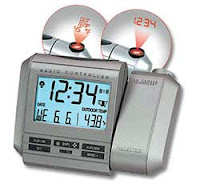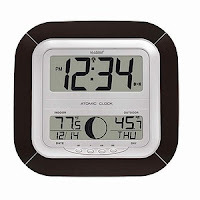The optical atomic clocks
 |
| The atomic clock |
It is popular that the atomic clock retains its accuracy within 1 sec for every 300
years , and it was among one of the first clocks to better the accuracy of
conventional timekeeping methods , And the atomic clocks are used in telecommunications .
You should know that timing
for electronics in high-energy accelerator swill be improved , where the particle physics is
investigated , Synchronization is very important in
these experiments , and what we are developing in the way of optical
atomic clocks can only help .
 |
| The atomic clock |
We must know that the optical atomic clocks are built on
different atoms and ions , and then comparing the differences can
provide verifiable laboratory measurements that could possibly answer the
questions as to whether some natural constants might experience change .
Everyone should know that the
most precise commercially available atomic clocks are accurate to
within less than 1 second over 3 million years , Why the need to be so
accurate ? It’s a good question when managing our time in everyday life
seems such an inexact science .
Everyone must know that while the precision
of these ultra-accurate clocks may seem impressive , they aren’t nearly
as good at keeping time as laboratory clocks which are 100 times more
precise , And research is under way to make them perform even better but
setting aside the quest for ever more accurate timepieces that could
prove or disprove the laws of physics , The atomic clocks have become an
everyday necessity in the modern world .
The uses of atomic clocks
 |
| The atomic clock |
Everyone should know that the atomic
clocks are characterized by two physical values which are the accuracy and stability
over a given period of time , A clock is selected depending on what it
will be used for , Less accurate but highly stable atomic clocks are the
most widely available and least expensive on the market but here we
have chosen to focus on the most accurate clocks that can function
autonomously .
Everybody should know that Synchronisation must
therefore be accurate to within 1/100 of a microsecond , Satellite clocks
must also be able to function without being adjusted for at least 12
hours , These clocks must be accurate to less than 1
second over 140,000 years .
It is popular that if the networks are not
functioning at the same speed , The information may be lost or the data
highways can become congested , To avoid this , the International
Telecommunication Union imposes a standard for operators that limits the
difference in speeds between two networks , These accuracy requirements
( 1 second over 3,000 years ) can only be met by the atomic clocks .
Everybody should know that the
network synchronisation requirement applies to high-speed mobile
networks ( 4G ) but also to electricity distribution networks which must
link the energy sources with identical frequencies and synchronised phases ,
The development of smart grids has made the use of accurate clocks even
more essential .
You should know that TAI is a
time scale generated after the fact by comparing different clocks , often
by measuring the differential with a particular GPS satellite clock at
the exact same moment ( common view clock synchronisation ) , In order to
have a time scale that is predictable in advance , many countries
generate local atomic time by setting an atomic clock by TAI .
 |
| The atomic clock |
You have known that after the
implementation of cesium in the atomic clocks the time keeping became
much more accurate than the current standard , There was such a dramatic
change in the accuracy of the measurement of time that in 1967 the
General Conference on Weights and Measures defined the SI second as
9,192,631,770 oscillations of the cesium atom at its resonant frequency .
 |
| The atomic clock |
You should know that although
the most common and widely used atomic clocks utilize the properties of
cesium , there are other types of atomic clocks , The difference between
these clocks is the element used and also the means of detecting when
the energy level changes , Other materials used in these clocks are
hydrogen and rubidium .
You must know that Hydrogen atomic clocks require a container with walls of a
special material so that the atoms do not lose the high-energy state
too rapidly , Rubidium clocks are the simplest and most compact of all
atomic clocks and use a glass cell of rubidium gas that changes its
light absorption when exposed to the proper microwave frequency .
 |
| The atomic clock |
You should understand that any GPS receiver can connect with these satellites and
compare the times broadcasted by each , The difference in these times
allows for the user to pinpoint his location , If these clocks were not
highly accurate the GPS system would be impractical and unreliable .
We should understand that the atomic clocks have many uses and one of the more familiar ones is the
Global Positioning System ,This is an example of a receiver that
utilizes such a system , Atomic clocks are amazing
tools for the advancing technology of today, but their usefulness can
only extend as far as the limits of nature will allow .
http://adf.ly/1Mjzqh
http://adf.ly/1Mjzqh
No comments:
Post a Comment